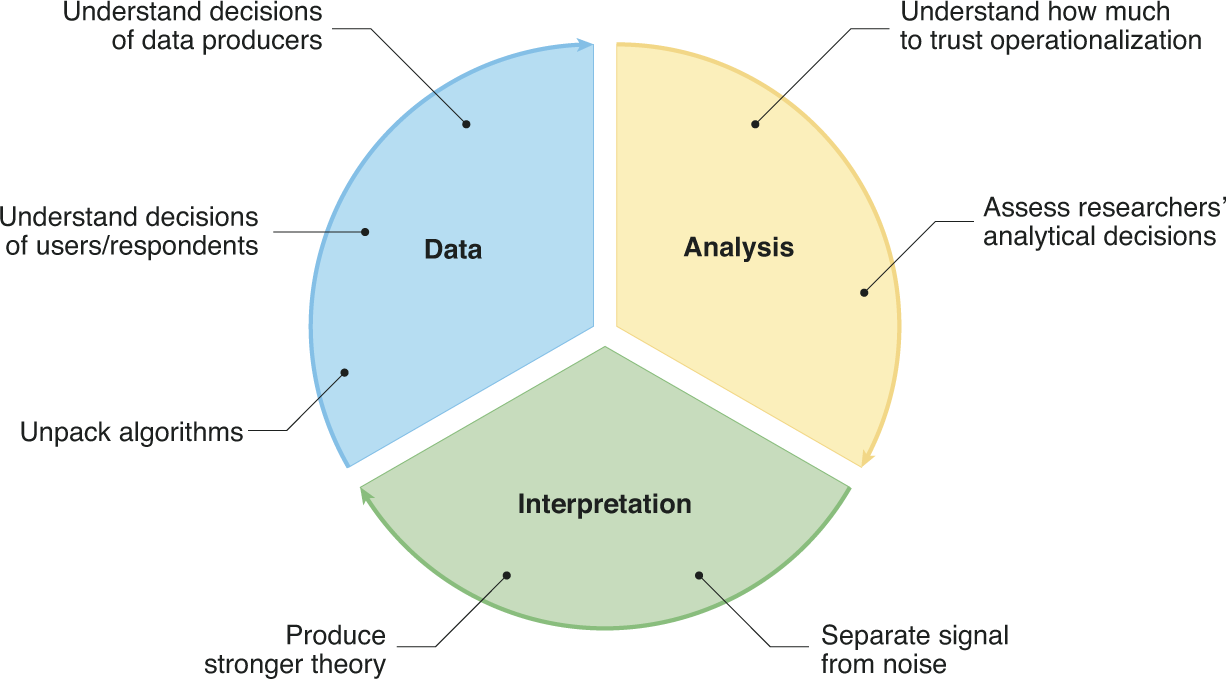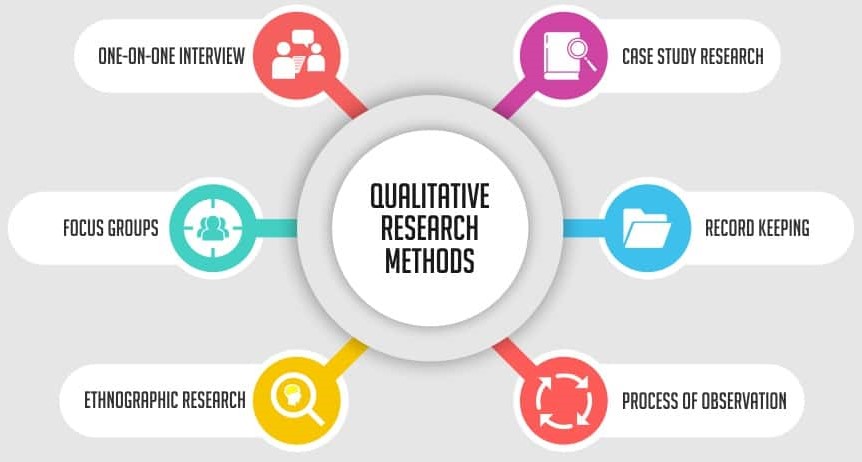Qualitative Research and Analysis for Businesses
At Precision, we recognize that qualitative research and analysis can be a powerful tool for business purposes when used skillfully. In contrast to quantitative business analysis approaches that deal with figures and statistical relationships, qualitative approaches allow you to systematically analyze data that consist of language or other non-numerical information, such as pictures or videos. Because data used in qualitative analysis do not need to be distilled down to a numerical dataset, qualitative approaches allow you the freedom and flexibility to explore important business questions in as much depth as you need through procedures like interviews or focus groups.
Gaining such depth of insight into your customers’, employees’, or other stakeholders’ perceptions and opinions definitely gives you an advantage, but with this depth of insight come rather sizable datasets. Trying to make sense of interview transcripts that can number into the hundreds or even thousands of pages can be overwhelming. Furthermore, qualitative analysis is particularly susceptible to bias, which can completely invalidate your analysis and conclusions.
Precision’s team of expert, PhD-level qualitative researchers can apply an unbiased, systematic analysis to massive amounts of language-based data to determine key themes or categories that speak to your most pressing business questions. This means that you can ask questions of key stakeholders (e.g., customers, employees) that are open-ended and therefore draw out more detailed responses than you are able to obtain when using instruments like surveys. This type of approach is important when you need to understand how key stakeholders think, feel, or act–and why. Such insights are what make qualitative components of market research projects incredibly valuable.
There are 3 ways to initiate contact with us:
- Please review and submit the following form. Someone from our team will contact you within 1 hour (during business hours), or at your requested time.
- Our consulting team is available via telephone Monday through Saturday from 8:00 A.M. to 8:00 P.M Eastern Time. Feel free to call us on (702) 708-1411!
- We also pride ourselves on our very prompt and in-depth e-mail responses, 365 days per year. We normally answer all urgent queries very promptly, including late-night and weekend requests. You can email us at Info@PrecisionConsultingCompany.com
Please be prepared to discuss the specifics of your project, your timeline for assistance, and any other relevant information regarding your proposed consultation. We respect the confidentiality of your project and will, at your request, supply you with a Non-Disclosure Agreement before discussing specifics.
Qualitative approaches fill an essential role in business-related research, and Precision is the only firm to provide comprehensive assistance with developing qualitative business research plans, conducting qualitative analysis, and preparing full research reports written for professional audiences. Precision has offered its expertise in qualitative research and analysis to businesses in a variety of industries, including medicine, technology, education, manufacturing, social services, and defense. Our qualitative analysis experts commonly assist with developing research protocols and conducting data analysis for purposes such as the following:
User experience (UX) research: UX research provides an in-depth understanding of how well your product or service meets customer needs by eliciting their feedback on areas such as usefulness, ease of use, perceived benefits, and value. Central to UX research is actual user interaction with your product or service, which allows users to then provide feedback that you can use to inform any next steps in your product or service development process. UX testing can help you to refine your product development efforts by identifying any key issues with your product or service that may affect its success. UX research can also inform your promotional efforts by highlighting particular areas of benefit and value that your product or service offers.
Customer analysis: A thorough customer analysis will involve both quantitative and qualitative components. The aim of customer analysis is to understand how the full customer base can be segmented based on factors such as demographics, psychographics, and buying behavior. Understanding why different customer segments think and act as they do is enormously helpful in developing usable customer profiles for your marketing needs, and qualitative analysis is ideal for providing such insights. Furthermore, customer analysis aims to identify what different customer segments need and how they prefer to meet those needs–both prime areas of research where a qualitative approach can provide rich insights into what your customers want and how they think. Customer analysis is essential to a thorough marketing plan, from initial product conceptualization all the way through pricing and promoting your product or service effectively.
Organizational consultations: Organizational health and productivity hinge upon an engaged and satisfied workforce. Although employee surveys can provide a broad sense of your employees’ perspectives, a qualitative exploration provides a much deeper set of insights into the various factors that influence employees’ perceptions of areas such as overall satisfaction, work engagement, job demands and resources, and organizational justice. Having an in-depth understanding of your employees helps to identify areas of policy and/or practice that you might alter to promote the vitality and productivity of your organization.
Large-scale medical or social research: Large research projects aimed at serving public health and well being (e.g., NIH grant-funded studies) often include large-sample surveys that include open-ended items that allow participants to provide additional thoughts or explanations related to previous survey item responses. When compiled, the short-answer qualitative segments can yield literally thousands of pages of text-based data. Similarly, interview-based research can quickly yield massive datasets once interviews are transcribed, even with samples of moderate size. Precision’s expert qualitative analysts can provide a consistent and thorough coding and thematic analysis of the largest of datasets, yielding a clear set of thematic findings for each of your research questions.
Procedures for Collecting Qualitative Data
Precision uses a customized approach, stepping in at whatever stage of your qualitative business research project you would like. This may include assisting you to select the right data collection procedure or set of procedures based on your specific research purposes and aims. The most common procedures for collecting qualitative data include:
Individual interviews: Interviews with individual respondents are among the most common means of obtaining rich qualitative data for business research. Interviews may be as short as 10-15 minutes or as long as several hours, depending upon the level of information needed and complexity of questions to be asked. Open-ended interview protocols are typically used for such interviews as they encourage more detailed and personalized responses. Individual interviews are ideal when you need in-depth responses to your questions from each respondent. Interviews are also appropriate when you are asking respondents about matters that may be highly sensitive or personal (i.e., when you are asking questions that they might feel uncomfortable answering in front of a group).
Focus groups: The focus group is a time-tested approach for gathering qualitative data, and facilitators collect data using the same types of open-ended questions as are used in individual interviews. Focus groups are especially useful when you are seeking to gain multiple perspectives on your business-related questions, as the dynamic of the focus group tends to spark additional ideas and responses from group members as they interact with one another. Because the interplay among group participants is so important for generating rich and varied responses, the optimal size of a focus group is usually 4-6 persons. If you have too few participants, the discussion about your key questions may stagnate; however, if you have too many individuals in the group, discussion may become disorganized, certain individuals may not have the opportunity to speak, and data quality may suffer as a result.
Observations: Another form of qualitative data can be collected through observations of activities that are relevant to your business research questions. Observations can be especially useful for gaining an outside perspective on processes or activities that your respondents have described in interviews or focus groups; this is often referred to as triangulation. For example, if you have interviewed individuals in a work group about team dynamics, you can follow up with observations of the group to gain an outside perspective on interactive processes as they actually occur. Observations can also be helpful in understanding processes or activities where direct data collection might not be feasible, such as consumer behavior in public settings.
Photos or videos: As with observations, photos or videos may be a useful form of qualitative data when a visual source of information is necessary to answer your questions. Videos may be used in much the same way as observations, when watching research-relevant activities as they occur is important for developing new understanding. Photos may be used to capture visual data that are relevant to your research questions, and they may also be used by participants to express their thoughts or perspectives related to your research questions. Photos and videos may be used as a sole source of data or in conjunction with other data forms.
Existing documents: Depending upon the aims of your business research, existing documents may provide a more appropriate source of qualitative data than newly collected responses from individuals. Qualitative analysis may be used to address business-related questions using existing documents such as policies, training materials, marketing materials, procedural manuals, and social media content. Note that if your business is seeking analysis of existing peer reviewed research on a specific topic, you might be interested in learning about our systematic review and meta-analysis assistance. This approach uses a data synthesis method that typically incorporates both qualitative and quantitative elements, and it is useful for deriving best practices from the evidence base or gaining an understanding of the state of knowledge on a particular research topic. Systematic reviews can be useful for business purposes such as developing policy and procedures and creating evidence-based professional development materials.
How We Can Assist With Your Qualitative Business Research
Precision’s qualitative research and analysis experts can provide customized assistance with your business-related qualitative research at any stage–from initial concept development all the way through data analysis and report generation. We start with a pro-bono consultation during which we collaboratively determine your needs and goals for the project. This initial consultation includes review of your existing research plan as well as any procedures, materials, and data you may have collected. If you are starting from scratch, we can work with you and your team to determine the aims and objectives of your research, developing an aligned qualitative research plan from there.
Based on your needs, we will collaboratively develop a plan for assisting with any of the following steps for your qualitative business research:
Developing research plan and procedures: Starting off with a coherent and thorough research plan will ensure that you move through the steps of your business-related qualitative research methodically. Following a well designed research plan also ensures that the data you collect will fully answer your business research questions. Before collecting any data, we can assist with carefully planning key steps, including: (a) what type of data to collect; (b) which individuals to include in your sample, and how many participants you need to ensure data saturation; (c) what type of data collection instrumentation to use; and (d) which data analysis approach to use.
Recommending quality measures: As noted above, excessive subjectivity is a definite threat to the quality of your research when using a qualitative approach. Our qualitative research experts can assist you to develop a set of procedures to offset the risk of such subjectivity, which is often referred to as supporting trustworthiness in qualitative research. The four key dimensions of trustworthiness are (a) credibility, (b) dependability, (c) confirmability, and (d) transferability. Implementing measures that promote trustworthiness ensures that you correctly represent your participants’ viewpoints, that you conduct your research in a clear and systematic manner that others could replicate, and that you avoid imposing your own bias on the findings.
Developing qualitative instruments: To promote rigor of your business-related research, it is essential to conduct data collection with a consistent approach. Whether you are conducting interviews, facilitating focus groups, or conducting observations, you will need to follow a data collection protocol to make sure that you approach all respondents and observations in the same manner. This is another area where Precision’s qualitative methods expertise works to your advantage. We can assist with choosing an interview structure (e.g., semi-structured, unstructured) to best align with your research aims, and we can also develop the full instrument that you will use to collect your data. The phrasing of interview questions is a nuanced matter, and we can develop your interview guide so that it draws out rich responses from your participants while making sure to avoid phrasing that influences or leads responses in any particular way. We can also develop observation protocols, which provide structure for observations, ensuring that each is approached with the same set of questions.
Completing systematic analysis: As you might imagine, data for a qualitative study can be quite voluminous. Precision’s qualitative analysis experts routinely work with very large quantities of qualitative data, sometimes with datasets of interview transcripts that run hundreds or even thousands of pages in length. Clearly, taking a systematic approach to the analysis of a high volume of text-based data is essential for producing rigorous findings that you can count on for guiding business decisions. Our experts can assist you to select the right analysis approach (e.g., thematic analysis, content analysis) depending upon the nature of your data and your research aims. In general, however, a qualitative analysis approach will progress through steps of: (a) importing the data into qualitative analysis software such as NVivo or ATLAS.ti and reviewing the data to gain a holistic sense of the content and meanings within the dataset; (b) labeling surface-level meanings on a line-by-line basis, also known as coding; (c) finding similarities across codes, which allows for identification of themes or categories in the data; and (d) naming and defining categories or themes that have emerged through this analysis process.
Report generation: Finally, we can assist with generation of a report that presents the findings of the qualitative analysis. We can tailor this report to your business needs and intended audience, developing a report that is as brief or extensive as you might need. Although the scope or depth of the report may vary, typical reports include the following: (a) review of the purpose, aims, and research questions for the study; (b) description of the participants, sample, setting, and data collection procedures; (c) description of the data analysis process; (d) presentation of the major and minor themes or categories that emerged through the analysis, along with definitions of themes or categories, excerpts of data that exemplify each theme or category, and frequency counts of each theme or category; and (e) review of any procedures implemented to support trustworthiness of the findings. If desired, our report can also provide recommended action steps based on the findings of the analysis.



